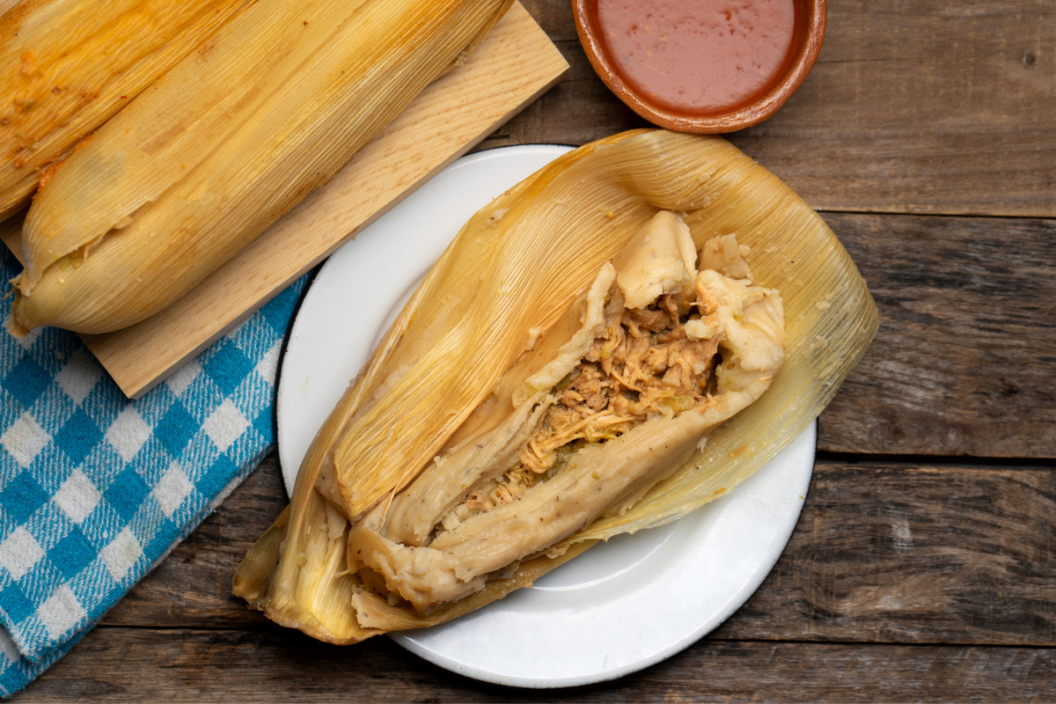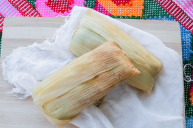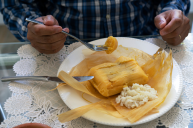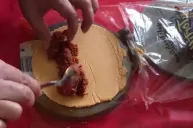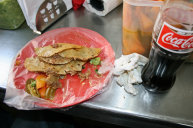Traditional Mexican tamales are an ancient food, dating back to as early as 8,000 BC. The handheld packet meal was like the original Hot Pocket; easy to pack and carry for nutrition on the go for the Aztecs and Mayans. Made of a corn-based dough called masa, the dough and filling are steamed in a corn husk, banana, or plantain leaf. Some people like to eat the actual leaf "wrapper" and others like to unwrap and just eat the filling. Tamales fillings can be any combination of seasoned meats, cheeses, vegetables, or chilies. There are also sweet tamales filled with dried fruits.
Considered a sacred food by the Aztecs, tamales were always an important part of rituals and gatherings, paying tribute to the Aztec Goddess of Corn called Chicomecoatl. In fact, the modern Spanish name "tamale" comes from the Aztec name "tamalli".
Tamales not only have a rich history but they continue to bring families and communities together. A gathering called a "tamalada" is basically a party for the labor-intensive job of making tamales. Generations of women usually get it all done but men are getting in on the cooking fun too. The most time-consuming part of tamale making is soaking the corn husks, so make sure to soak the corn husks overnight for the best results.
What Is In a Tamale?
Brisket is the meat you'll most commonly find as meat filling in addition to pork shoulder. Cut the brisket into large chunks and sear all around. Add onions, spices, and generous cloves of garlic and cover with warm water. Once it's all boiling, turn down to a simmer until the meat begins to fall apart.
Shredded pork tamales mixed with salsa verde is an easy filling instead of slow-cooked brisket. You can even cheat and use a grocery store rotisserie chicken for fast chicken tamales.
How To Make Mexican Tamales
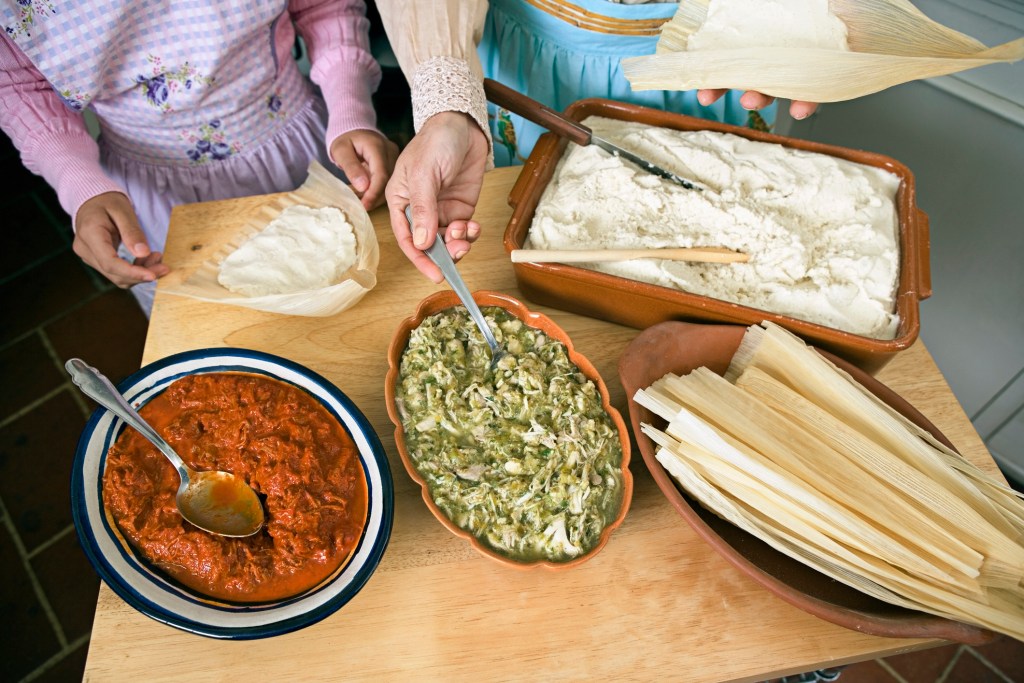
Getty Images
Now for the tamale dough masa mixture. Melt the lard and mix it into the masa in a large bowl in smaller batches with salt, baking soda, and beef broth. You can be traditional and use your hands or go easy with an electric stand mixer since it needs to be mixed for at least 10 minutes to get fluffy.
Dried ancho chiles are part of most tamale recipes to get that traditional filling taste. You can use pre-made ancho chile paste or if your tomallada is really roaring, boil fresh chiles down until mushy and puree into a paste.
Melt lard and the chile paste together, cooking for a few minutes. Add the shredded brisket and broth. Continue cooking down until most of the liquid is absorbed.
How To Assemble Tamales
Spread a thin coating of masa over the widest end of your husk. Spoon filling down the middle of the masa. A 50:50 ratio of masa and filling seems to work well for even cooking. Fold the sides of the husk together firmly and fold up the empty lower section of the corn husk. This should form a tightly closed "bottom" and an open top.
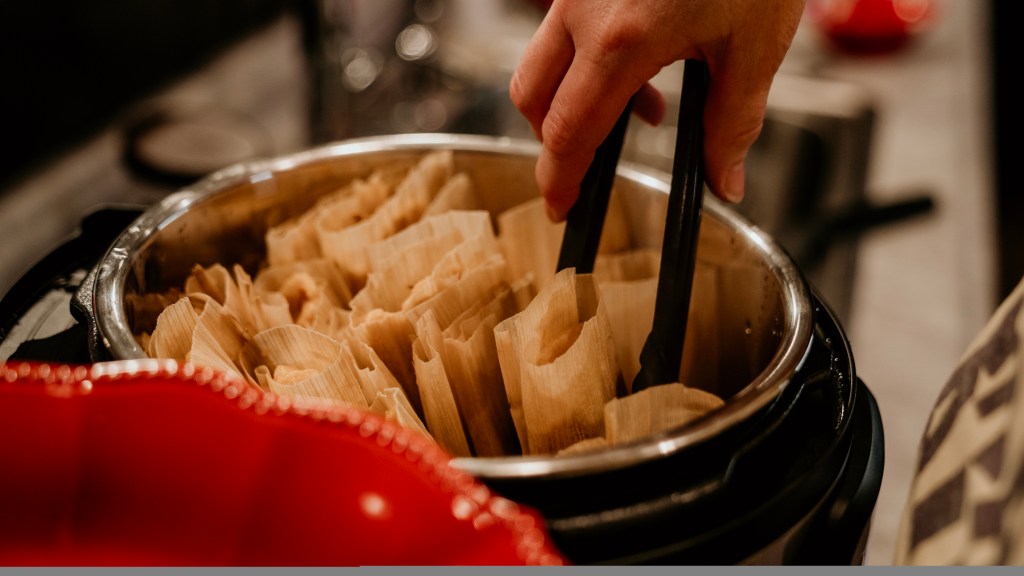
Getty Images
Fill the bottom of a large stockpot (or steamer) with water and put it on your stovetop. Place a steamer basket on top and put a ball of tinfoil in the center to help the tamales stand up in a spiral. Make sure the folded part is on the bottom. Pack them closely together but with some space for steam to circulate. The cook time over medium heat will vary from about 1-3 hours. Make sure the water doesn't get too low but never let the boiling water touch the bottoms of the tamales as they steam. They're ready to eat when you unwrap the husk and the cooked masa peels away easily.
Separate cooked tamales into smaller batches and wrap them in foil. They can be easily frozen and can be reheated in a damp paper towel in the microwave if you don't have time to re-steam.
